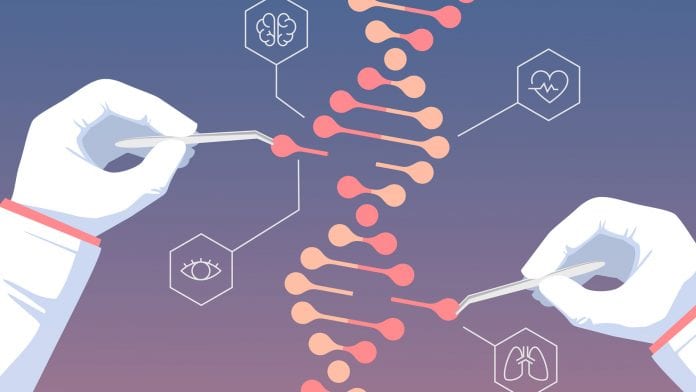
Scientists have developed a novel CRISPR technology tool that allows for superior control of epigenetic inheritance for up to 450 generations, paving the way for powerful epigenetic therapies.
The team of scientists at UC San Francisco and the Whitehead Institute have modified CRISPR’s architecture to extend its use beyond the genome and into the epigenome – proteins and molecules that control when and where genes are switched on or off. The novel CRISPR-based tool has been named CRISPRoff – and allows almost any gene in human cells to be switched off without making a single edit to the genetic code.
The researchers demonstrate that once a gene is switched off, it remains inert in the cell’s descendants for hundreds of generations, unless it is switched back on with a complementary tool called CRISPRon.
Both tools have been described in the paper published in the journal Cell.
CRISPRoff
The epigenome plays a central role in many diseases such as viral infections or cancer. The new CRISPRoff technology does not involve any DNA editing, meaning it is likely to be safer than conventional CRISPR therapeutics, which have been known to cause unwanted and potentially harmful changes to the genome.
Luke Gilbert, PhD, a professor at UCSF’s Helen Diller Family Comprehensive Cancer Center and co-senior author of the new paper, said: “Though genetic and cellular therapies are the future of medicine, there are potential safety concerns around permanently changing the genome, which is why we’re trying to come up with other ways to use CRISPR to treat disease.”
Conventional CRISPR is equipped with two pieces of molecular hardware for gene-editing, including a DNA-snipping enzyme, which gives CRISPR the ability to alter DNA sequences, and a homing device that can be programmed to zero in on any DNA sequence of interest, imparting precise control over where edits are made.
To build CRISPRoff, the researchers created a stripped-down CRISPR capable of targeting any gene, but not editing it, which they then tethered an enzyme to, and, rather than splicing DNA, this enzyme acts on the epigenome.
The new tool targets a particular epigenetic feature known as DNA methylation, which is one of many molecular parts of the epigenome. When DNA is methylated, a small chemical tag known as a methyl group is affixed to DNA, which silences nearby genes. Although DNA methylation occurs naturally in all mammalian cells, CRISPRoff offers scientists unprecedented control over this process. Another tool described in the paper, called CRISPRon, removes methylation marks deposited by CRISPRoff, making the process fully reversible.
Jonathan Weissman, PhD, Whitehead Institute member, co-senior author of the new paper and a former UCSF faculty member, said: “Now we have a simple tool that can silence the vast majority of genes. We can do this for multiple genes at the same time without any DNA damage, and in a way that can be reversed. It’s a great tool for controlling gene expression.”
Previous research has led to the belief that 30% of human genes would be unresponsive to the new tool. This is because DNA consists of four genetic letters – A, C, G, T – but, in general, only Cs next to Gs can be methylated. To complicate matters, scientists have long believed that methylation could only silence genes at sites in the genome where CG sequences are highly concentrated, regions known as “CpG islands” – which nearly one third of human genes lack.
“What was thought before this work was that the 30% of genes that do not have CpG islands were not controlled by DNA methylation,” said Gilbert. “But our work clearly shows that you don’t require a CpG island to turn genes off by methylation. That, to me, was a major surprise.”
Therapeutic potential
When CRISPRoff silences a gene, that gene remains switched off in the treated cell, however, it also stays off in the descendants of the cell as it divides for as many as 450 generations, even in maturing stem cells.
Though the transition from stem cell to differentiated adult cell involves a significant rewiring of the epigenome, the methylation marks deposited by CRISPRoff were inherited in a significant fraction of cells that made this transition, suggesting that CRISPRoff would only need to be administered once to have lasting therapeutic effects.
The researchers say this makes the tool a promising approach for treating rare genetic disorders such as Marfan syndrome, which affects connective tissue, Job’s syndrome, an immune system disorder, and certain forms of cancer.
























